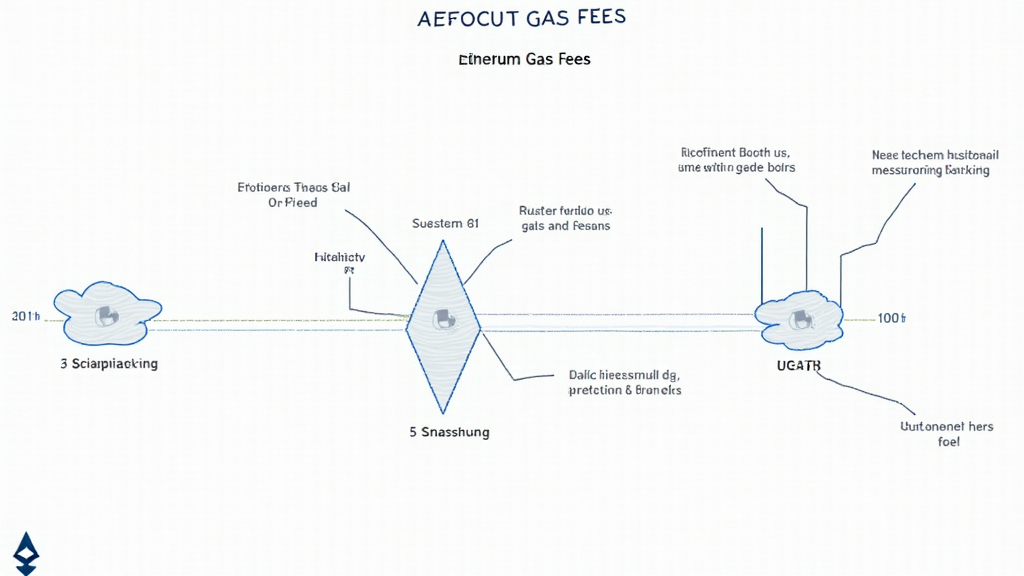Introduction: The Growing Importance of Ethereum Gas Fees
With the Ethereum ecosystem continuing to thrive and expand, users are increasingly encountering the phenomenon known as Ethereum gas fees. In 2024 alone, users paid over $3 billion in gas fees due to heightened network activity, which reflects a significant challenge for traders and developers alike. Understanding these fees is essential for anyone engaging with Ethereum-based applications.
This article aims to demystify Ethereum gas fees, providing valuable insights into why they exist, how they are calculated, and how users can effectively manage these costs. Whether you are a seasoned investor or a newcomer to the crypto space, grasping this concept is vital for optimizing your transactions.
What Are Ethereum Gas Fees?
Gas fees are essentially transaction costs on the Ethereum network, akin to the transaction fees levied by traditional banks. Every action on the Ethereum blockchain, from simple transactions to executing smart contracts, requires computational resources, which are quantified in gas. Gas fees are paid in Ether (ETH), Ethereum‘s native cryptocurrency.

Here’s how it works: when a user wants to perform a transaction or execute a smart contract, they specify a gas limit (the maximum amount of gas they are willing to use) and a gas price (the amount they are willing to pay per unit of gas). The total transaction fee is calculated as:
Total Fee = Gas Limit x Gas Price
Gas fees fluctuate based on network demand. During times of congestion, as seen during the DeFi boom in 2024, the costs can skyrocket significantly.
Factors Influencing Gas Fees
Several factors can impact the gas fees associated with Ethereum transactions:
- Network Congestion: High demand for transactions can lead to increased gas prices. During peak periods, fees can reach exorbitant levels.
- Complexity of Transactions: More complex actions, such as using smart contracts, typically require more computational power, leading to higher fees.
- External Market Factors: Crypto market volatility and changes in supply and demand can influence gas fees.
- Time Sensitivity: Users willing to pay higher gas prices can prioritize their transactions, encouraging a competitive environment.
Strategies to Minimize Gas Fees
While gas fees can be daunting, there are several strategies users can employ to minimize these costs:
- Monitor Gas Prices: Use tools like EthGasStation to track real-time gas prices. Understanding market fluctuations can help you decide the best time to make a transaction.
- Choose Optimal Timing: Transactions may be cheaper during off-peak hours, so timing your actions wisely can lead to savings.
- Batch Transactions: For those conducting multiple transactions, batching them together can reduce overall fees.
- Use Layer 2 Solutions: Consider utilizing Ethereum Layer 2 solutions, such as Optimism or Arbitrum, which allow for cheaper transactions and faster confirmations.
Ethereum Gas Fees and the Vietnamese Market
In Vietnam, the growth of cryptocurrency adoption has influenced the use of Ethereum and, consequently, its gas fees. According to Chainalysis, Vietnam ranked second in global crypto adoption in 2024, with a remarkable increase in Ethereum users by 300%. As more Vietnamese users engage with DeFi platforms, understanding gas fees becomes even more critical.
For Vietnamese investors, minimizing gas fees can mean the difference between a profitable transaction and a costly oversight, furthering the need for education on this subject. Utilizing tools and resources available in the local language can be beneficial.
Future Developments in Ethereum Gas Fees
As Ethereum continues to evolve, particularly with the transition to Ethereum 2.0 and the implementation of the London Hard Fork, changes in the gas fee structure are expected. The introduction of a new fee mechanism may alleviate some of the volatility that users currently face.
With scalability improvements and the potential integration of more efficient protocols, the goal is to create a more user-friendly experience when it comes to gas fees. However, until these changes are fully rolled out, users must remain vigilant and informed.
Conclusion: Navigating Ethereum Gas Fees
Navigating the complexities of Ethereum gas fees can be challenging, yet it is a crucial aspect of engaging with the Ethereum network. By understanding how these fees work and implementing strategies to reduce costs, users can optimize their experiences and make informed decisions.
As the market evolves, so too will the landscape of gas fees. Staying updated with the latest developments in Ethereum will equip users with the necessary insights to manage expenses effectively. Embrace the journey into the Ethereum ecosystem while empowering yourself with knowledge about Ethereum gas fees and their implications.
For more information on various aspects of blockchain and cryptocurrency, visit hibt.com.
About the Author
Dr. Andrew Lin is a blockchain technology expert with over 15 years of experience in the cryptocurrency space. He has written extensively on blockchain security and smart contracts, authoring more than 30 papers and leading audits for renowned projects.











